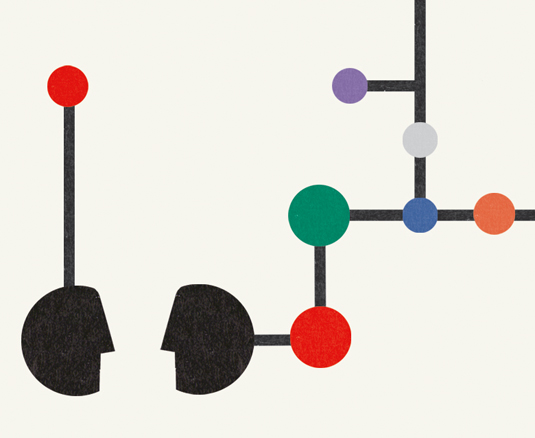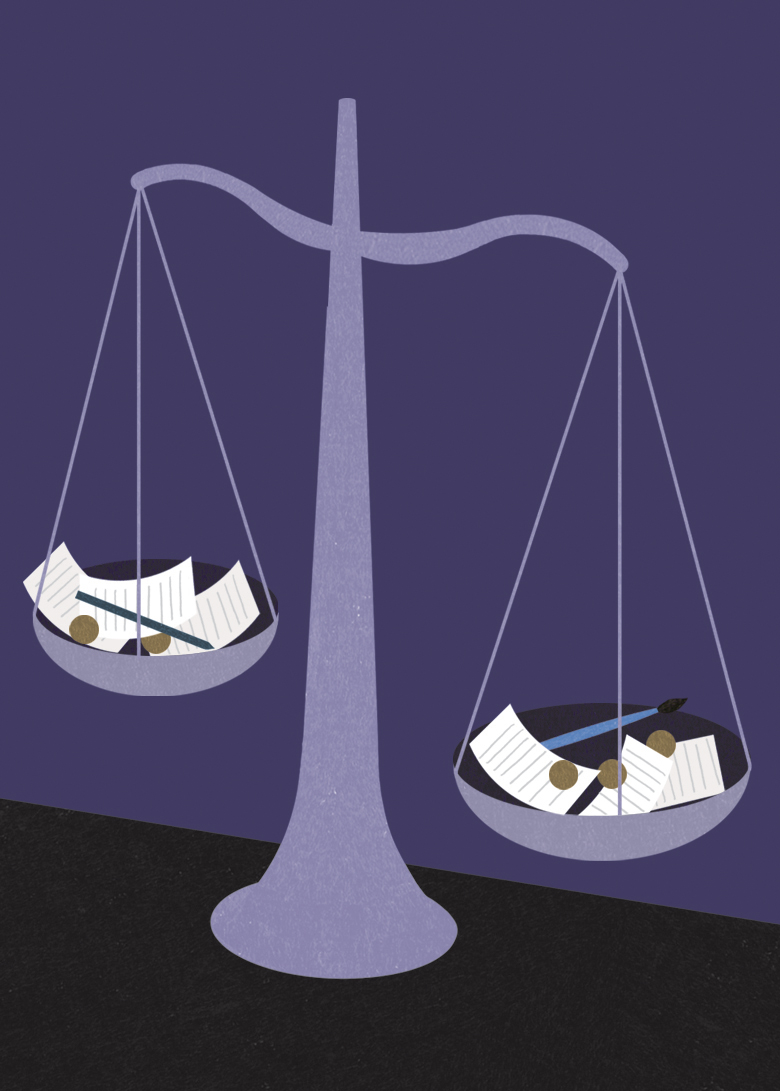10 pro tips for painless collaborative projects
Two creative heads can be better than one if you go about it properly - follow our guide to hassle-free collaboration.
Working with another creative mind on a project can be rewarding and productive - but is fraught with potential pitfalls. Follow these 10 bits of advice and you'll give your partnership the best chance of success.
01. Define the project

Ideas generated on evenings down the pub or at networking events may crackle with potential, but take time to consider the reality of the project and define what it will involve. Are you biting off more than you can chew? Will you and your collaborative partner expect payment? Will the project have any commercial merit? What's the intended use or idea behind it all? Fix these parameters before you agree to take on any work.
02. Choose who you work with wisely

Wanting to work with a fellow illustrator or designer on a shared project because you like their work isn't reason alone to embark upon a collaborative project - especially an artistic or unpaid one. Consider potential collaborators who bring skills and ideas that you might lack, who have access or contacts that you don't, and whose skills and expertise complement yours.
03. Share a goal

There's little point agreeing to work with one or more creative collaborators if you're all pulling in different directions. Define and agree what it is that you're trying to achieve and how you will do so: this could mean creating a business or project plan. Start with your goal and work backwards, identifying each step necessary to deliver on it. Then split these steps into areas that you and your collaborator can take ownership of.
04. Agree a timescale

Everything needs a deadline - everything. If you don't set a deadline for your creative projects, and agree mini-deadlines in between, then it could be unlikely that your collaborative project will see the light of day. A deadline is a target, though, not the finish line of a race. Aim to achieve the project's goals in a realistic time, but don't be unrealistic about this: too often collaborative projects slip into negligence through inattention.
05. Who owns the project?

Whether it's you and another creative, or a team of collaborators working on a project, there should be someone at the tip of the creative arrowhead directing and deciding on changes. More often than not a leader figure will naturally occur - often the person whose idea the project was in the first instance. Allow them to define and drive the project forward. If it's you, lead without expectation - especially if it's an unpaid collaboration.
06. Communicate honestly

Always be honest in your feedback with your collaborator if you expect the same from them. This doesn't mean giving a rounded critique of every element, asset or edit, but positive responses, ideas and suggestions, and enthusiasm at all times. Remember that a collaborative project is the combination of two or more styles and skills, and the influence of your partner(s) should shape the project. Leave your expectations at home.
Daily design news, reviews, how-tos and more, as picked by the editors.
07. Agree terms before you start working

If the project is self-initiated, make sure you agree exactly who is responsible for what. If it's commercial, then you need a watertight contract that states exactly who is to deliver which elements, by what date and to whom. You also need to agree revenue distribution and the all-important IP rights of the assets and imagery created for the project. Even if it's a part-time, fun project, make it clear from the outset who 'owns' what; whether it be website code, IP rights to character illustrations or even project credits.
08. Think about assets management

Define what resources will be required and who is responsible for them. For example, if you're working on a short-run magazine, you'll need a masthead and page furniture for every page. Once a project asset is complete, share it with other collaborators via Dropbox or a shared folder. By doing so, it ensures everyone's aware of a project's direction from an early stage and prevents conflicts of opinion further down the line. What's more, it prevents different collaborators working up the same elements twice.
09. Share your work

Whether you've collaborated on a commercial or self-initiated project, it always pays to share your work. You might want to blog the project's development, create a microsite, enter the finished pieces into a competition or exhibition, or simply shout about your brimming creativity. Make sure that each of your collaborative partners has the assets and basic information about the project so you can all support its release.
10. Enjoy it

Collaboration is productive, fun and often results in genuinely inventive work. It also lets you get involved in something outside of your daily grind - so even if the project has no commercial merit, embrace it with passion and enthusiasm. Remember this and have fun. If you do, more people will want to collaborate with you, upping your design kudos and industry standing in one.
Illustrations: Ellie Tzoni
This article first appeared in Computer Arts. Got any tips for collaborating? Share them in the comments!

The Creative Bloq team is made up of a group of art and design enthusiasts, and has changed and evolved since Creative Bloq began back in 2012. The current website team consists of eight full-time members of staff: Editor Georgia Coggan, Deputy Editor Rosie Hilder, Ecommerce Editor Beren Neale, Senior News Editor Daniel Piper, Editor, Digital Art and 3D Ian Dean, Tech Reviews Editor Erlingur Einarsson, Ecommerce Writer Beth Nicholls and Staff Writer Natalie Fear, as well as a roster of freelancers from around the world. The ImagineFX magazine team also pitch in, ensuring that content from leading digital art publication ImagineFX is represented on Creative Bloq.
